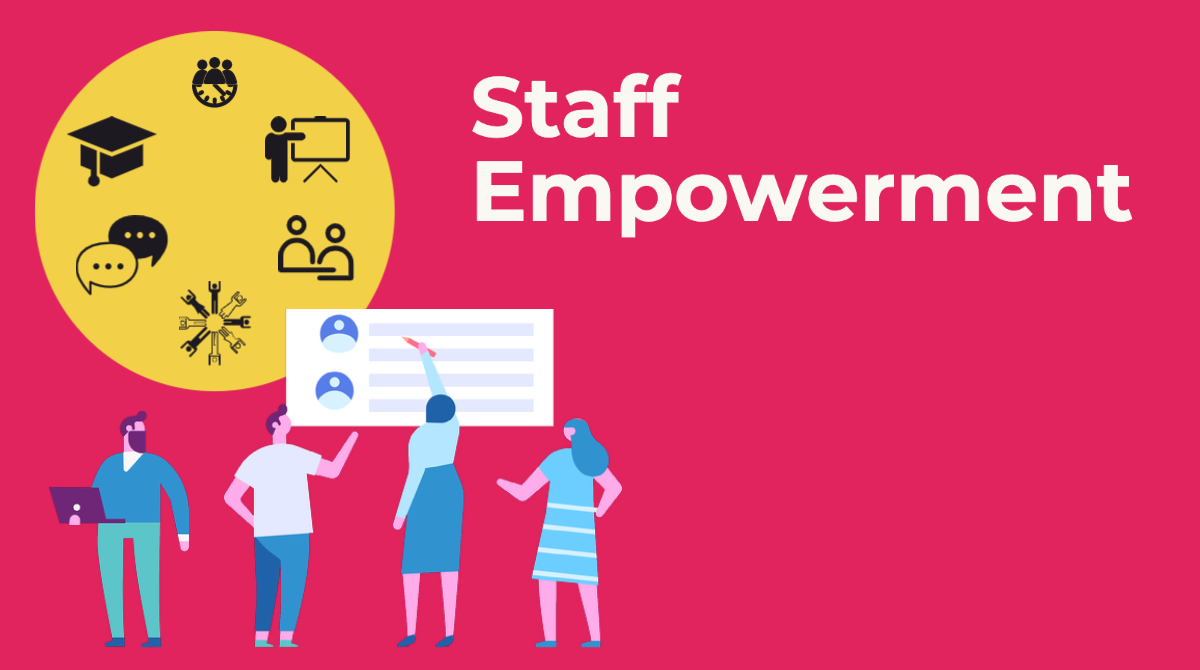OIT Staff Development Empowers People, Fuels Strategy

Years after winning three Super Bowls, the legendary football coach Bill Walsh reflected in an interview, “Management today recognizes that to have a winning organization, it has to be more knowledgeable and competent in dealing with and developing people.”
Walsh was talking about managing the San Francisco 49ers, but he may as well have been talking about OIT.
After all, OIT is a team. When individuals perform better, the team performs better. Every employee plays a vital role in the success of our organization, and all of those roles are interconnected.
In a recent discussion amongst the Front Office leadership, CIO Rajiv Uppal said, “The best asset we have is our people. That’s why all of us collectively want to invest as much of our energy and our time in our people.”
OIT Deputy Director and Deputy CIO George Hoffmann added, “The Front Office is trying to empower people. We are trying to…bring decision-making to where the knowledge is. Let the people who understand drive the decision making.”
To better distribute authority, OIT has adopted both technological and organizational innovations. Technological innovations, like cloud computing, make it easier for you to provide customers with efficient, secure, compliant, and accessible solutions. Organizational innovations maximize the effectiveness of those technical innovations.
To give employees greater ability to excel in their positions and a greater voice in plotting OIT’s path forward, the office has implemented “people tools.” They include the following:
- The DEI Coalition, founded in 2020, works to create a culture within OIT where everyone feels heard, seen, and valued. In 2021, OIT formally drafted a DEI strategy because when each employee brings their own voice to the conversation, it creates a richer, more innovative, and positive environment.
- OIT is establishing more feedback loops to encourage dialogues and idea sharing. You can take advantage of these opportunities by attending open panel discussions with senior leaders, responding to OIT employee feedback surveys, and reading or sharing content from Slack and in News from OIT.
- OIT embarked on a cultural assessment journey to learn more about its identity as an organization. It’s the equivalent of holding up a mirror and asking everyone: “Who are we?” “How do we communicate, interact, and collaborate?” and “What is working and what isn’t working?” The recent staff engagement survey was one step along the way of this journey.
- OIT established the Workforce Resilience Program so that employees can learn new skills in several different areas such as product management and cybersecurity. The modular design of the program allows OIT staff to choose a level of depth that fits their needs and a pace of learning that fits their schedule.
Hoffmann, who spearheaded several of those initiatives, says, “OIT depends on its people learning new skills, whether those skills pertain to new technologies or new ways of working together.”
In the near-future, you will start to hear more about another important organizational innovation: Objectives and Key Results (OKRs). They are a goal-setting tool designed to empower staff and infuse shared values across our entire organization.
“OKRs will help improve processes so they are less burdensome on staff,” Senior Technical Advisor Rick Lee explains. “At the same time, they will help align progress on key value streams, reducing waste throughout the entire OIT enterprise.”
Importantly, OKRs flow from the bottom up as well as the top down. In a healthy organization, the best ideas get sunlight, no matter who they come from. OKRs are one of many channels – along with interactive meetings, surveys, DEI strategy, and professional development – OIT is using to give power to its people.
“We're committed to discovering the best methods of supporting our people so that they can be the best versions of themselves,” Hoffmann says. “That's our shared vision for the continuous journey of evolving OIT into an agile, value-driven, cutting edge organization.”

